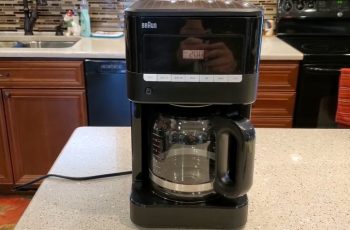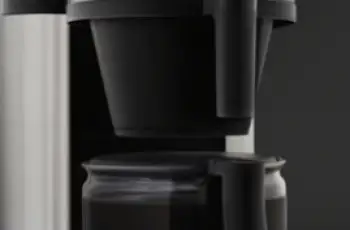For as long as I can remember, I’ve been trying to figure out the best way to brew coffee at home. There are countless ways to go about it, from instant coffee packets you find in line at Starbucks to $1,000 machines that brew café-quality espresso right on your countertop. In between, there are a dozen drip methods, Nespresso machines, and other contraptions that promise to extract the perfect flavor from your freshly ground beans. The one method we all know, however, is humble drip coffee.
Whether you’re used to the Mr. Coffee your dad used for your entire childhood or drink from an enormous industrial drip brewer at work, we’re all familiar with the flavor of drip coffee. It is rarely the best coffee you’ve ever had and often just what we drink to get through the day. In recent years, however, that’s changed; more and more residential drip brewers are being designed for exceptional coffee brewing instead of low price points. The Café Specialty Drip Coffee Maker is one such brewer.
The coffee machine is one of the most popular appliances to have in homes today. So many people drink coffee but don’t have the time to devote to more complex ways of brewing. Thankfully, coffee machines do all the heavy lifting for us so that getting a cup of coffee is as simple as pressing a button. Most coffee machines work with the same basic process to move water through coffee grounds and into your cup. There are some differences depending on the kind of coffee machine you have on your countertop.
Inside A Drip Coffee Maker
When you take off the top of any drip coffee maker you are going to find all three of the following things:
- Heating Element – This is just a simple wire that is coiled and is quite similar to a filament inside of a light bulb or even the heating element you might find in your toaster. It simply gets hot as soon as you run some electricity through it.
- Plaster – The coil of a drip coffee maker is embedded in some plaster in order to make it tougher. The heating element has two specific jobs that it does. First, when you put the water into the drip coffee maker it heats up the water. After the coffee has been brewed this same heating element helps to keep the coffee warm.
- Grease – The heating element is usually sandwiched between the drip coffee maker’s warming plate and a water tube that’s made of aluminum. The heating element presses against the underside of this warming plate and then there is white, heat-conducting grease makes sure that the transfer of heat is done efficiently. You will find this same kind of grease in all kinds of items like stereo amplifiers and other power supply devices.
How Drip Coffee Maker Works
A drip coffee maker is really a simple device. Manufacturers of the drip coffee maker have honed the design of drip coffee makers over a period of more than 30 years and so this appliance is pretty direct when you open it up. Once you remove the top from a drip coffee maker, you will find a reservoir, the drip is and the showerhead. A drip coffee maker has a depression on the right side; this is the flow of the reservoir bucket. There is an orange tube that passes cold water from a hole at the top of the reservoir. This tube connects to the white tube. A power cord can be seen as well. If you are thinking to buy a drip machine then first know how do these parts of drip coffee makers work?
1. Reservoir
The reservoir is the part that holds the water you pour into the pot when you are starting to make your coffee. The reservoir bucket has a hole at the bottom and a white tube leading from the reservoir base to the drip area. The purpose of this white tube is to carry hot water to the coffee maker’s drip area and that also helps you use cleaning solutions when cleaning your machine.
2. Shower Head
The showerhead receives the hot water carried by the white tube. Once the hot water hits the showerhead, it is sprayed onto the coffee grounds.
3. Drip Area
This is an area that has a plastic disc that is perforated. Not all drip coffee makers have a drip area but in those that do, water flows from the white tube and lands on the drip area then flows through its holes and onto the coffee grounds.
4. Heating Element
The drip coffee maker’s heating element is located at the left side of the appliance’s base. The heating element has an aluminum extrusion that has two sections, a tube that allows water to pass through and a resistive heating element. Water is heated by the aluminum tube and the resistive heating element (Check the video here). Basically, the resistive heating element is a coiled wire that is similar to a light bulb’s filament or the element that is found in the electric toaster that heats up when electricity runs through it. Inside the resistive element is a coil that is embedded in plaster so that it is more rugged. The heating element serves two purposes. First, it heats up when water is poured into the drip coffee maker. Secondly, it keeps the brewed coffee warm once the brewing process is done.
Heat transfer in the heating element
The resistive heating element sits between the aluminum water tube and the warming plate in drip coffee makers. This element presses against the lower side of the warming plate directly. It also presses against the white heat conductive grease that ensures efficient transfer of heat. The grease is really messy and is found in different devices including power supplies and stereo amplifiers that have to dissipate heat.
The Switch
The best drip coffee makers have a switch that turns on and off the power that the heating element uses. To prevent the heating element from overheating, the switch is fitted with components like fuses and sensors. Sensors that are fitted into drip coffee makers are designed to detect when the coil is becoming too hot and stop the current from flowing. Once the coil cools off, the sensors turn on the current again, here you can view inside of drip machine. By repeating this cycle of on and off, they maintain an even temperature on the coil. On the other hand, fuses cut the power off completely when they detect very high temperatures. The fuses, therefore, serve a safety purpose in case the main sensor stops working.


